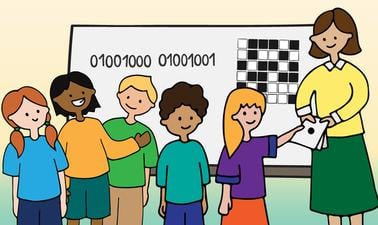MOOC List is learner-supported. When you buy through links on our site, we may earn an affiliate commission.

MOOC List is learner-supported. When you buy through links on our site, we may earn an affiliate commission.
It offers ways to explore computational thinking using simple tools readily available in classrooms and homes, such as cards, chalk and scales to engage with students.
Based on the content in the popular open-source CS Unplugged website (csunplugged.org), this course demonstrates how to teach computational thinking from unplugged to plugging-it-in with programming.
Each module will weave in the following:
- Connections to apply CS Unplugged into classroom programmes by structuring the modules to have suitable activities that lead on from each other.
- An explanation of why we value computational thinking in the classroom
- What is the big picture around computational thinking (especially, what is computation, and how does it fit with all the definitions of computational thinking that teachers may encounter),
- The “so what” about each concept, how it connects to people, and where you see it in everyday life
- Stories of history – human connections
What you'll learn
- Binary basics
- Text and image representation
- Error control – how digital devices detect and correct errors in data
- Human Computer Interaction – how to evaluate and create interfaces that work for people
- Human capabilities
Syllabus
The aim of this course is to equip you so that you can support your learners in developing student agency while using their creativity and knowledge of computational thinking to potentially influence the future of society.
To achieve the goal of this course of learning the foundational skills, the program learning outcomes are:
- Know how to engage students with a range of deep ideas from Computational Thinking.
- Explain how a Parallel Sorting Network can be used to engage students with deep ideas in Computational Thinking.
- Explain how numbers, letters and images can be represented using just two symbols i.e. binary representation
- Know how to engage students with examples of error detection and correction to enable them to recognise how data is stored and shared safely in everyday life
- Explain why interface evaluation is an important skill in Computational Thinking, and be able to support learners to assess interfaces from the user’s point of view.
MOOC List is learner-supported. When you buy through links on our site, we may earn an affiliate commission.
MOOC List is learner-supported. When you buy through links on our site, we may earn an affiliate commission.
